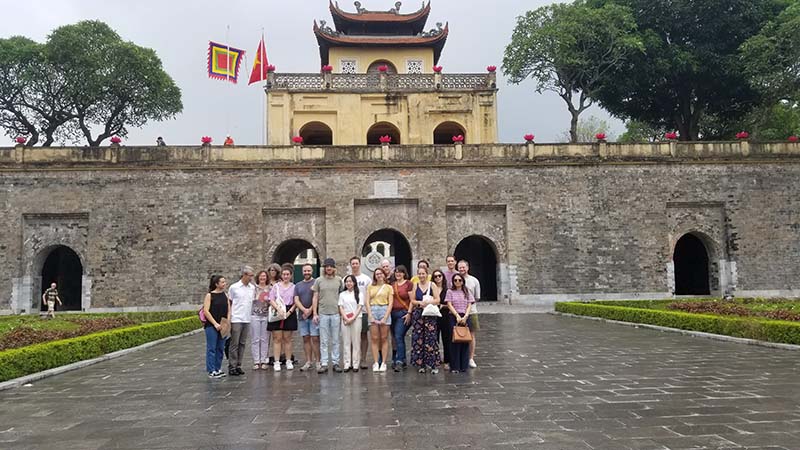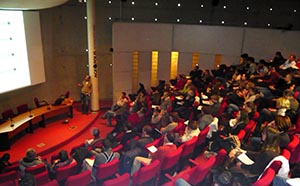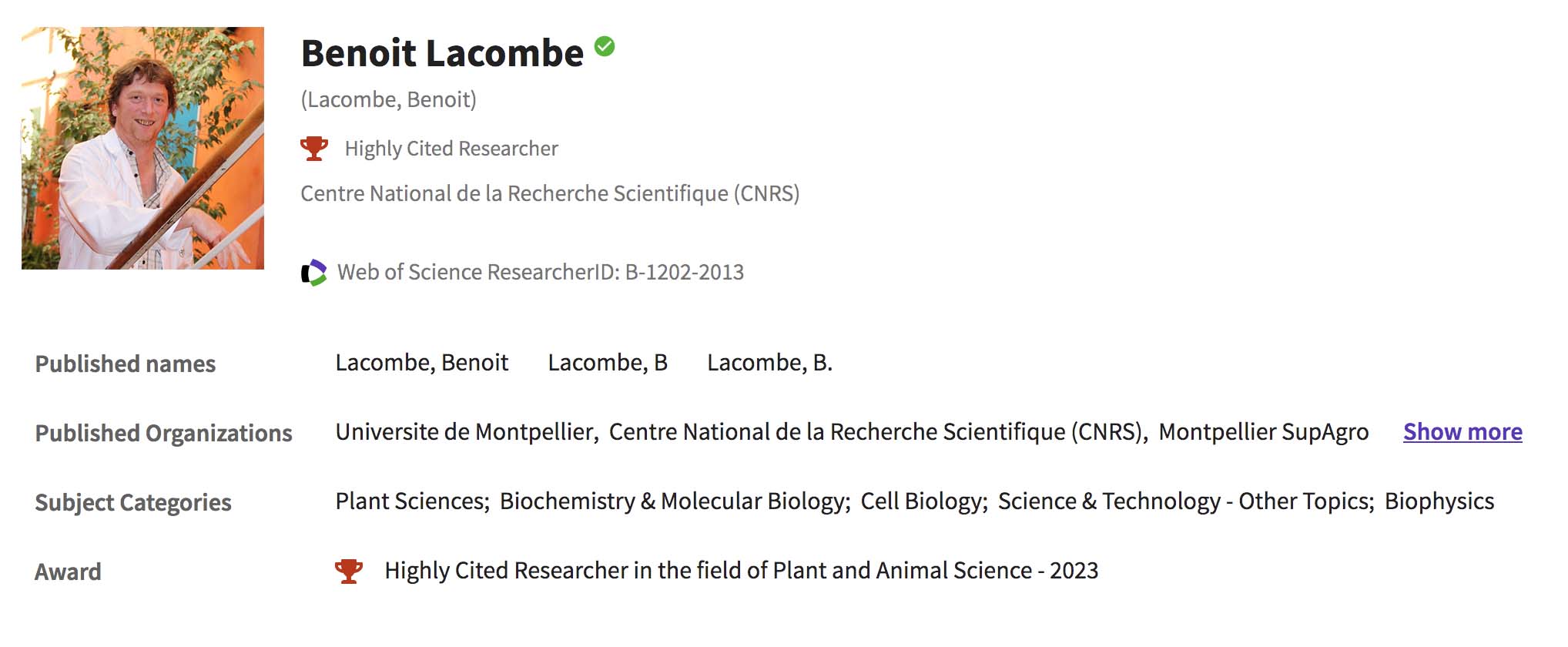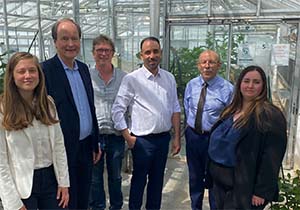
Hormones, nutrients and development
 Group leader: Benoît Lacombe
Group leader: Benoît Lacombe
CNRS Research Director
Key words
nutrients-hormones interaction, nutrients sensing, long-distance signaling, systems biology, machine learning
Presentation
The mineral nutrition of most terrestrial organisms (bacteria, fungi, plants) relies on the uptake of inorganic ions from the soil. However, the availability of these ions dramatically fluctuates in both time and space. To face this constraint, all organisms are able to develop a wide range of adaptive responses triggered by sensing systems that perceive the external nutrient availability. The identification of these sensing systems has a strategic importance at both fundamental and applied levels to unravel and manipulate the molecular mechanisms involved in tolerance to nutrient stress. Flexible modulation of the postembryonic organogenesis in response to nutrient availability is one of the most prominent adaptation strategies, and a major determinant of the plant body architecture. This plant ability to respond to environmental conditions is mediated through signalling molecules called plant hormones. Thus, the current insights into hormone and nutrition interplay indicate existence of complex network in which hormones act as endogenous mediators in response to nutrient fluctuation and at the same time fine tune plant capacity for nutrient acquisition. The current data support the concept of nutrient – hormonal regulatory network control plant behavior in response to fluctuating nitrogen environments and feedback on the nutrition acquisition capacity. Together with the influence of nitrogen on hormonal status of the plant this builds the conceptual cycle where nutrients control growth, which in turn control nutrient use and perception. However, molecular mechanisms underlying this nutrient – hormones regulated plant development are still scarcely understood. We develop complementary approaches to understand the molecular basis of development regulated by the hormone-nutrient interactions (nitrate and urea). We focus on interactions during root development with different approaches taking advantage of our skills in biophysics, molecular and cellular biology, physiology and systems biology. The project uses an approach at the interface between biology and modeling to reveal the molecular mechanisms involved in the interaction between nutritional and hormonal signals in plants. Our goal is to identify the mechanisms through which plants perceive their mineral environment and modify their development to adapt to nutritional constraints by using complementary approaches: targeted approaches on different nitrate, auxin, ABA and cytokinins transporters, and approaches without preconceptions using systems biology.
Team members
Main results
Significant publications
Armstrong EM, Larson ER, Helen H, Webb CR, Dohleman F, Araya Y, Meade C, Feng X, Mukoye B, Levin MJ, Lacombe B, Bakirbas A, Cardoso AA, Fleury D, Gessler A, Jaiswal D, Onkokesung N, Pathare VS, Phartyal SS, Sevanto S, Wilson I, Grierson CS✉ (2023) One hundred important questions facing plant science: an international perspective. New Phytol., 238(2):470-481
Abualia R, Ötvös K, Novák O, Bouguyon E, Domanegg K, Krapp A, Nacry P, Gojon A, Lacombe B, Benková E✉ (2022) Molecular framework integrating nitrate sensing in root and auxin-guided shoot adaptive responses. P. Natl. Acad. Sci. USA, 119(31):e2122460119
Therby-Vale R, Lacombe B, Rhee SY, Nussaume L, Rouached H✉ (2022) Mineral nutrient signaling controls photosynthesis: focus on iron deficiency-induced chlorosis. Trends Plant Sci., (in press)
Safi A✉, Medici A, Szponarski W, Martin F, Clément-Vidal A, Marshall-Colón A, Ruffel S, Gaymard F, Rouached H, Leclercq J, Coruzzi GM, Lacombe B, Krouk G✉ (2021) GARP transcription factors repress Arabidopsis nitrogen starvation response via ROS-dependent and -independent pathways . J. Exp. Bot., 72(10):3881-3901
Fichtner F, Dissanayake IM, Lacombe B, Barbier F✉ (2021) Sugar and nitrate sensing: A multi-billion-year story. Trends Plant Sci., 26(4):352-374
Léran S*, Noguéro M*, Corratgé-Faillie C, Boursiac Y, Brachet C, Lacombe B✉ (2020) Functional characterization of the Arabidopsis abscisic acid transporters NPF4.5 and NPF4.6 in Xenopus oocytes. Front. Plant Sci., 11:144
Bouain N, Krouk G, Lacombe B, Rouached H✉ (2019) Getting to the root of plant mineral nutrition: combinatorial nutrient stresses reveal emergent properties. Trends Plant Sci., 24(6):542-552
Medici A*✉, Szponarski W*, Dangeville P, Safi A, Dissanayake IM, Saenchai C, Emanuel A, Rubio V, Lacombe B, Ruffel S, Tanurdzic M, Rouached H, Krouk G✉ (2019) Identification of molecular integrators shows that nitrogen actively controls the phosphate starvation response in plants. Plant Cell, 31(5):1171-1184
Poitout A, Crabos A, Petřík I, Novák O, Krouk G, Lacombe B, Ruffel S✉ (2018) Responses to systemic nitrogen signaling in Arabidopsis roots involve trans-zeatin in shoots. Plant Cell, 30(6):1243-1257
Noguéro M*, Léran S*, Bouguyon E, Brachet C, Tillard P, Nacry P, Gojon A, Krouk G, Lacombe B✉ (2018) Revisiting the functional properties of NPF6.3/NRT1.1/CHL1 in xenopus oocytes. bioRxiv,
Safi A, Medici A, Szponarski W, Marshall-Colón A, Ruffel S, Gaymard F, Coruzzi GM, Lacombe B, Krouk G✉ (2018) HRS1/HHOs GARP transcription factors and reactive oxygen species are regulators of Arabidopsis nitrogen starvation response. bioRxiv,










